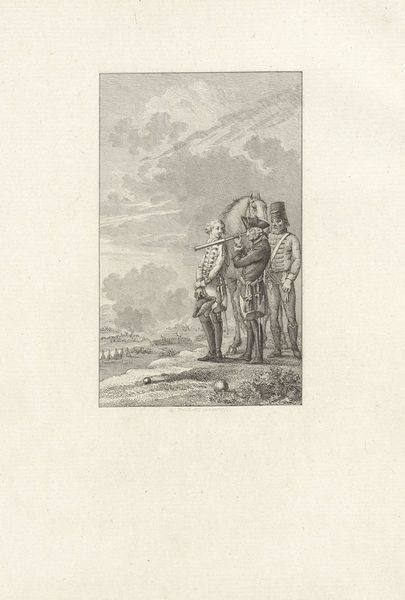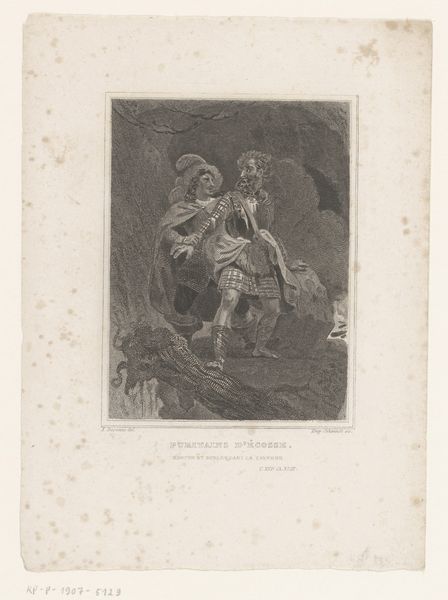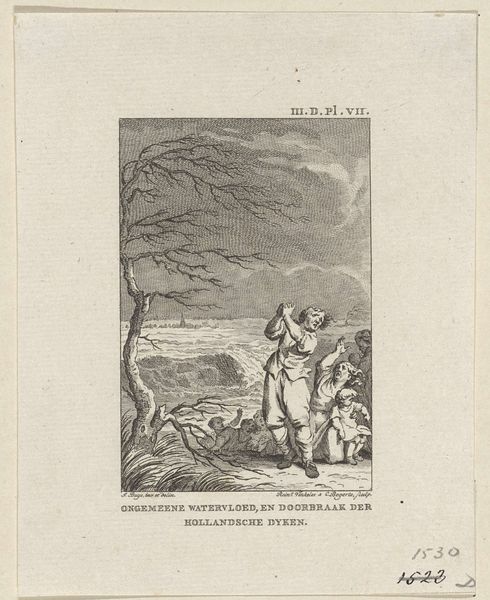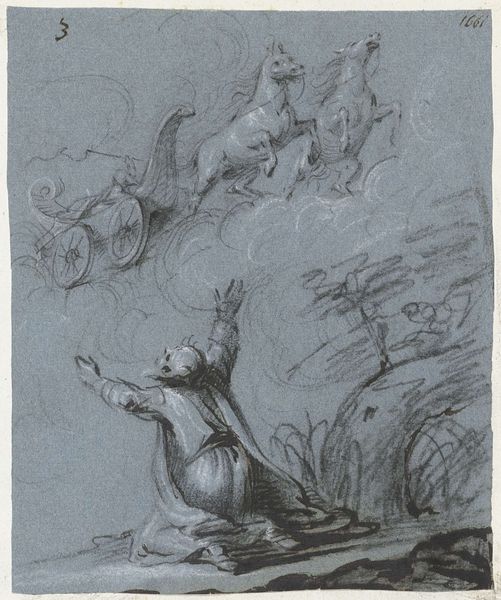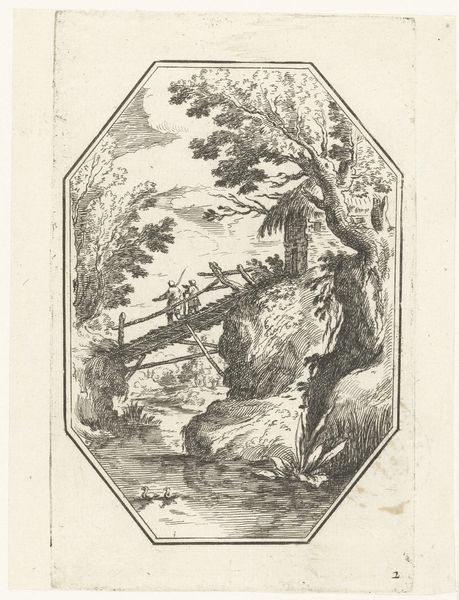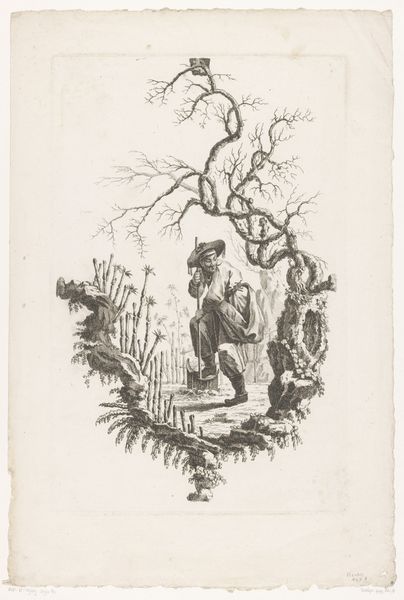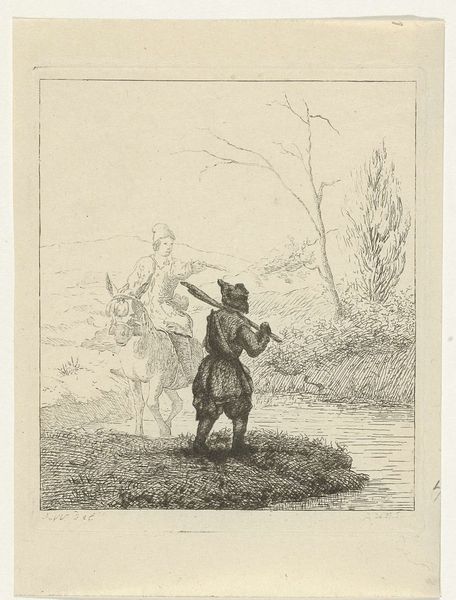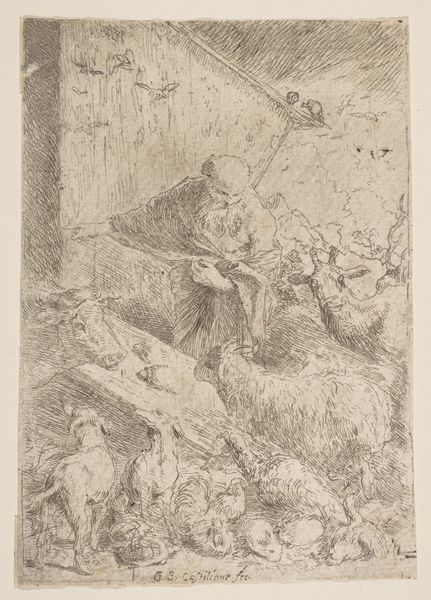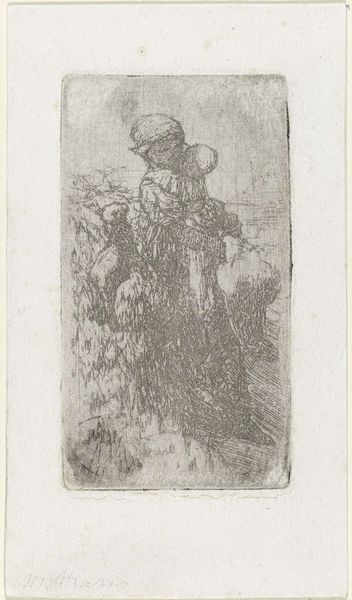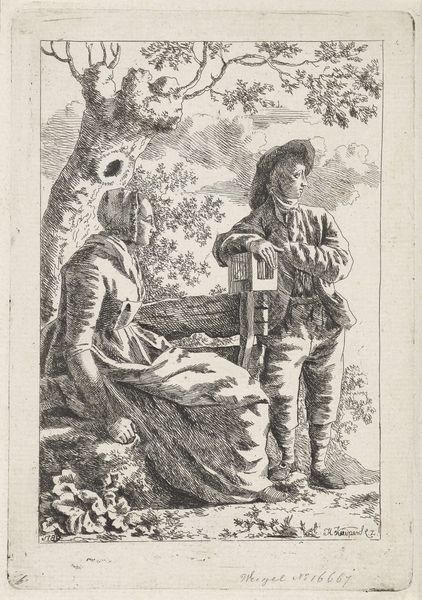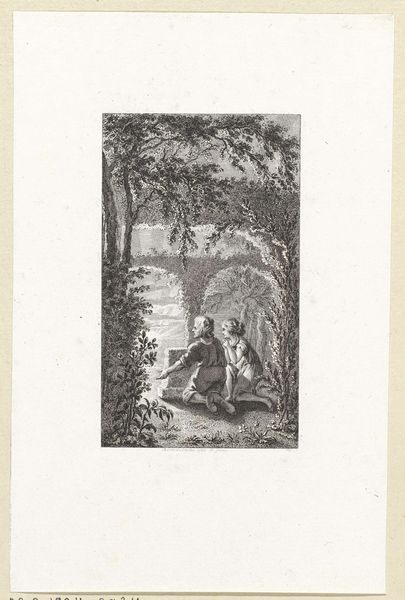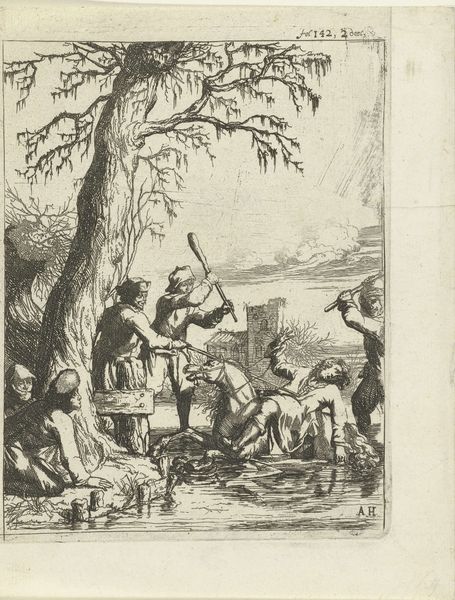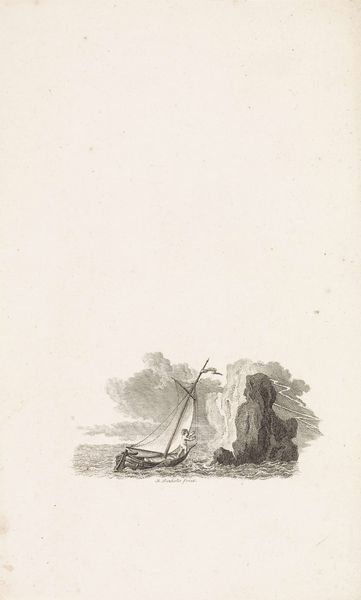
Dimensions: width 152 mm, height 192 mm
Copyright: Rijks Museum: Open Domain
Curator: This pen and ink drawing on paper is entitled “Pelgrim in gesprek,” dating from somewhere between 1822 and 1880, by Reinier Craeyvanger. You can find it here at the Rijksmuseum. What strikes you first? Editor: It has an immediacy that’s lovely. A slightly hazy feel, perhaps a visual softness due to the light pencil work in the background. The central figure—I presume the pelgrim, or pilgrim—and his companion have weight due to darker ink. It suggests a conversation caught mid-moment. Curator: Precisely! The artist created this piece at a fascinating juncture. In the Netherlands at this time, there were powerful tensions in the role of art—should artists reinforce national identity through genre painting or history painting or explore universal Romantic themes? Reinier found some balance, producing a scene that reads as simultaneously local and universal. Editor: Note the careful compositional balance. The stark tree echoes the upright figure of the pilgrim, mirrored by the sitting woman and foliage. Yet, the real point is this well with broken boards. Is that where our eyes should naturally land? Curator: The broken well points to larger conversations of this period concerning piety, rural life, and historical storytelling. Images like these were commonly circulated, reproduced in popular print and even porcelain, suggesting this pilgrimage resonated across Dutch society and beyond! Editor: What do you mean by resonate? To me, this drawing showcases technical prowess in the contrasting pen and ink line quality. Look at how economical, even simplistic the pen work appears at the edges while dense cross hatching describes tone in the central figures. I can feel how carefully the artist experimented with creating volume by juxtaposing line, shadow, and negative space. It almost speaks to how people speak. Curator: Agreed—and the work touches on deep sentiments relating to rural and urban division. It reveals tensions from debates in 19th-century art societies. What, truly, made something “Dutch?” Should landscape or genre paintings offer nationalistic images of stability and historical progress? Editor: Hmmm. But consider again: The Romantic-style landscape technique uses contrasts, tone, and narrative in order to reveal something raw—maybe some other idea beyond place. In the end, this sketch brings together formal construction alongside a light airy, feel! Curator: Exactly, it presents a tension between narrative responsibility and aesthetic values, reminding us that cultural artifacts like this sketch become grounds for continued discussion even today.
Comments
No comments
Be the first to comment and join the conversation on the ultimate creative platform.
